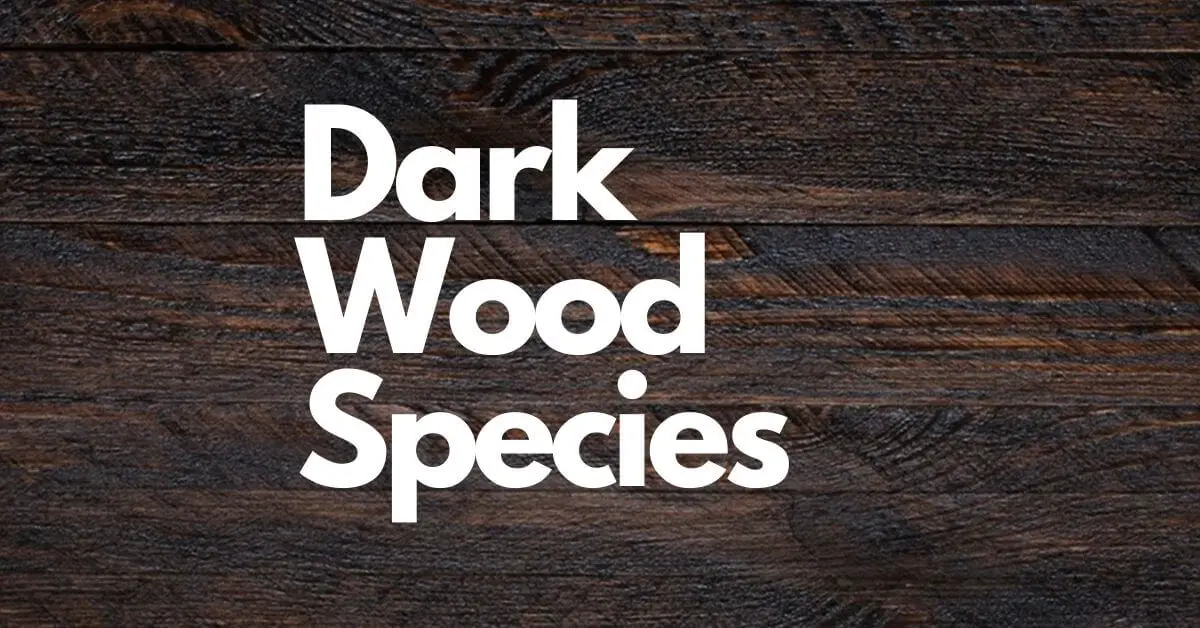There are many species of dark wood. Some are easily available, but some are very rare and expensive. Most of the owners prefer dark furniture and other interior applications because it gives a warm and comforting look to a room.
Dark wood has rich color, strength, and stability. Which are essential properties for furniture.
What type of wood is dark wood, hardwood, or softwood?
Most dark wood is hardwood. But the wood of softwood species can also be medium-dark. Such as Cedar, Fir, Pine, Rosewood, etc.
Some Dark Hardwood Species are as Follows.
Ebony Wood
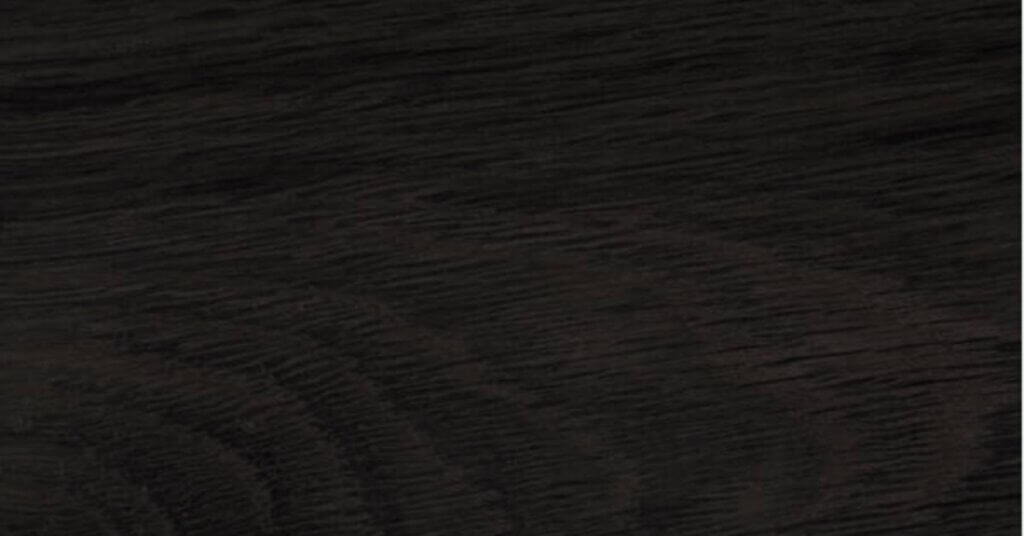
Ebony is considered to be the natural darkest wood. It is native to southern India and Sri Lanka and western Africa.
Ebony is termite and insect resistant. It is a very durable and stable wood and it is the best wood for making furniture. But it is an expensive and rare species.
Color/Appearance: The heartwood is jet-black and the sapwood is dark brown or grayish-brown. Sometimes streaks may be present.
Uses: Ebony Woods is known for making quality cabinet work, inlays, musical instrument parts, and ornamental objects.
Workability: Can be difficult to work with hand tools due to their extremely high density.
| # | Gaboon Ebony |
| Scientific name | Diospyros crassiflora |
| Tree Size | 50-60 ft (15-18 m) tall, 2-3 ft (.6-1 m) trunk diameter. |
| Average Dried Weight | 60 lbs/ft3 (955 kg/m3) |
| Janka Hardness | 3,080 lbf (13,700 N)) |
| Color/Appearance | Jet-black to grayish-brown. |
| Rot Resistance | Resistant to termite attack. |
| Type | Hardwood |
| Durability | Very Durable |
Mahogany Wood
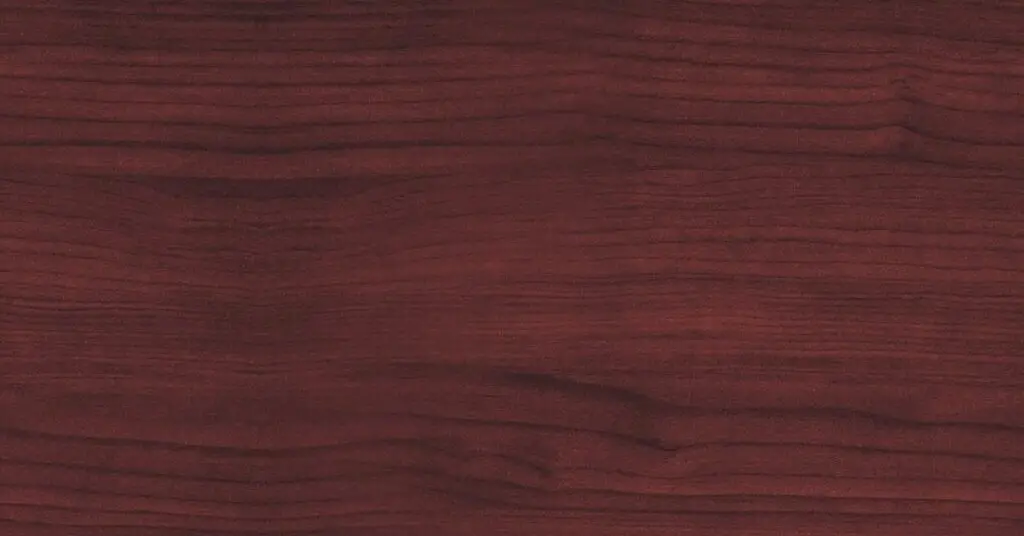
Mahogany is widely used to make amazing musical instruments and durable furniture projects. It is native to Central and South America. Mahogany is known for its natural dark color, durability, and density.
Color/Appearance: The heartwood is dark reddish-brown and the sapwood is pinkish brown. Color tends to darken with age.
Uses: Furniture, cabinetry, turned objects, veneers, musical instruments, boatbuilding, and carving.
Workability: Generally very easy to work with tools: machines well. Turns, glues, stains, and finishes well.
| # | Honduran Mahogany |
| Scientific name | Swietenia |
| Tree Size | 75 feet tall, 50 trunk diameter |
| Average Dried Weight | 37 lbs/ft3 (590 kg/m3) |
| Janka Hardness | 900 lbf (4,020 N) |
| Color/Appearance | Pinkish brown to reddish-brown. |
| Rot Resistance | Moderately rot resistant |
| Type | Hardwood |
| Durability | Extremely Durable |
Walnut Wood

Walnut (Juglans) is a stable, hard, strong, and durable hardwood. Due to its excellent shock resistance properties, it is widely used for gunstocks.
Walnut is a tree of the genus Juglans (family Juglandaceae). It is native to North and South America, southern Europe, Asia, and the West Indies. The Walnut tree gives nuts in the form of seeds. These nuts are most commonly used as food.
Color/Appearance: The heartwood is dark chocolate brown with darker brown streaks and the sapwood is lighter pale brown.
Uses: Furniture, cabinetry, gunstocks, interior paneling, veneer, turned items, and other small wooden objects and novelties.
Workability: It is generally easier to work with hand and machine tools. But sometimes it can be difficult due to irregular grain patterns.
| # | Black Walnut |
| Scientific name | Juglans |
| Tree Size | 50 feet tall, 30-35 trunk diameter |
| Average Dried Weight | 38 lbs/ft3 (610 kg/m3) |
| Janka Hardness | 1,010 lbf (4,490 N) |
| Color/Appearance | Pale brown to Dark chocolate brown. |
| Rot Resistance | Extremely Rot-Resistant |
| Type | Hardwood |
| Durability | Extremely Durable |
Cocobolo Wood
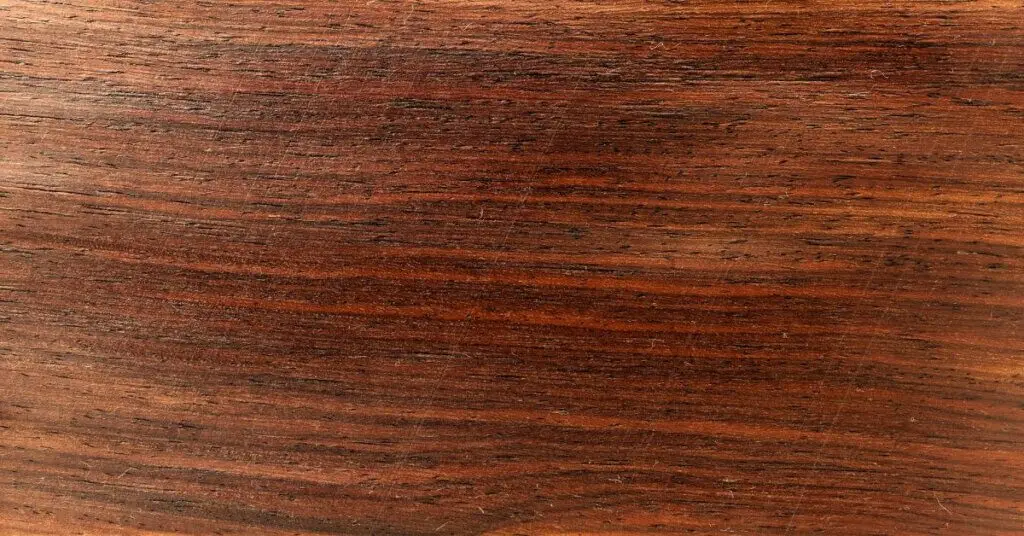
Cocobolo is native to Central America. It is strong, durable, stable, and extremely beautiful. But only the heartwood is useful. Its natural oils give it good resistance to degradation from wet/dry cycles.
Color/Appearance: The heartwood is yellow, orange, red, and shades of brown, and the sapwood is pale yellow.
Uses: Fine furniture, musical instruments, turnings, and other small specialty objects.
Workability: Its workability properties are not good. Due to the high oil content. It can occasionally cause problems with gluing. Its density is very high, so it is difficult to work with.
| # | Cocobolo |
| Scientific name | Dalbergia retusa |
| Tree Size | 45-60 ft (14-18 m) tall, 1.5-2 ft (50-60 cm) trunk diameter |
| Average Dried Weight | 69 lbs/ft3 (1,095 kg/m3) |
| Janka Hardness | 2,960 lbf (14,140 N) |
| Color/Appearance | orange or reddish-brown |
| Rot Resistance | Extremely Rot-Resistant |
| Type | Hardwood |
| Durability | Extremely Durable |
Wenge Wood

Wenge wood is stable, hard, very durable, and has good termite resistance. It is extremely dark and beautiful.
Wenge is native to the Republic of Congo, Cameroon, Gabon, and Equatorial Guinea. The species is rare and listed as “endangered” on the IUCN Red List.
Color/Appearance: The heartwood is medium brown to dark brown and the sapwood is reddish or yellowish.
Uses: Veneer, paneling, furniture, turned objects, and musical instruments.
Workability: Due to the high density. It can occasionally cause problems with hand and machine tools. Large pores can be difficult to fill if they are perfectly smooth and shiny.
| # | Wenge |
| Scientific name | Millettia Laurentii |
| Tree Size | 60-90 ft (18-27 m) tall, 3-4 ft (1-1.2 m) trunk diameter |
| Average Dried Weight | 54 lbs/ft3 (870 kg/m3) |
| Janka Hardness | 1,930 lbf (8,600 N) |
| Color/Appearance | medium brown to reddish with black streaks |
| Rot Resistance | Resistant to termite attack. |
| Type | Hardwood |
| Durability | Extremely Durable |
Teak Wood
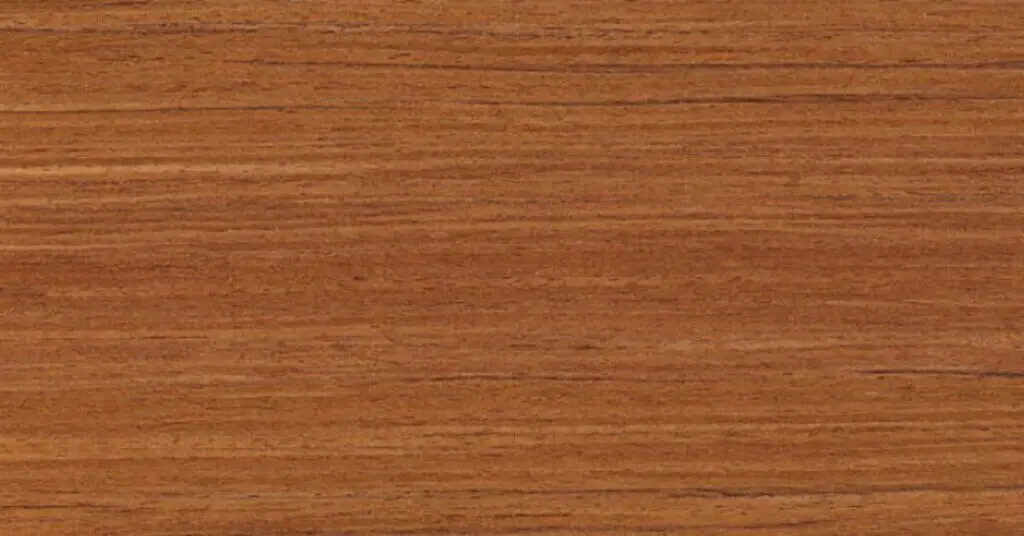
Teak is a strong, durable, and stable hardwood. It has excellent rot resistance properties. Teak is suitable for internal and external applications. Teak is native to southern Asia.
Color/Appearance: The heartwood is golden or medium brown, and the sapwood is creamy white.
Uses: Ship and boat building, veneer, furniture, exterior construction, carving, turnings, and other small decorative objects.
Workability: Easy to work with hand and machine tools. Teak contains a high level of silica (up to 1.4%).
| # | Teak |
| Scientific name | Tectona grandis |
| Tree Size | 100-130 ft (30-40 m) tall, 3-5 ft (1-1.5 m) trunk diameter |
| Average Dried Weight | 41 lbs/ft3 (655 kg/m3) |
| Janka Hardness | 1,070 lbf (4,740 N) |
| Color/Appearance | golden or medium brown |
| Rot Resistance | Rot Resistant. |
| Type | Hardwood |
| Durability | Heartwood is very durable |
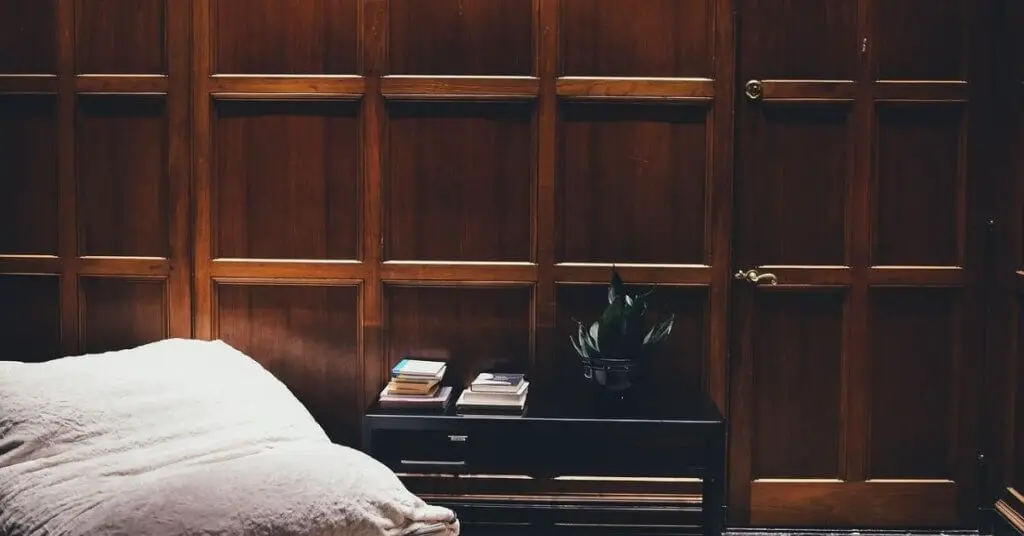
Dark Wood Pros
- Dark wood absorbs sunlight, so dark-colored floors look better for a long time.
- Dark wood looks more attractive compared to light wood.
- Most of the dark hardwoods are more durable and rot-resistant.
- Dark wood gives your furniture a visually stunning appeal.
Dark Wood Cons
- Dark wood is difficult to stain.
- Generally, dark wood is expensive.
- Scratches are usually more visible in dark wood.
Tips for Dark wood
- Avoid chemical detergents for cleaning and use a good quality hardwood cleaner.
- Use a quality vacuum cleaner.
- Use furniture leg pads to avoid dents and scratches.
- Do not soak your floors with water.

